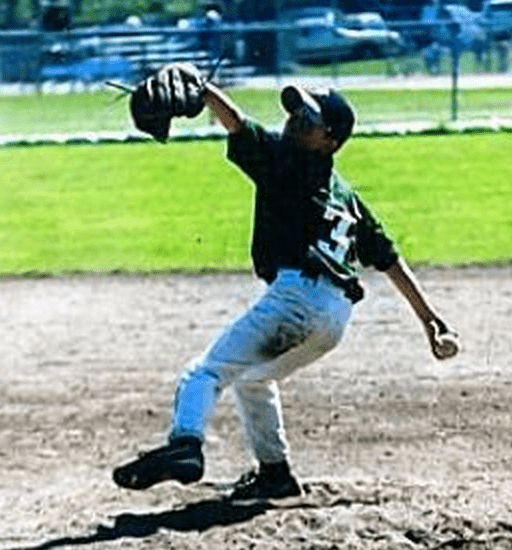Mechanical Improvements Through Training

Too often you see guys trying to “change their mechanics” through use of video and a pitching instructor who helps them along, but the reality is that unless the athlete is at such a low level of proficiency, these lessons don’t usually stick. Since an athlete tends to retain the same throwing mechanics throughout his life (which is why you need to stress arm strength, arm health, throwing – not pitching – mechanics, and limited breaking ball use at a young age), making an overnight or short-term change isn’t feasible.

Case in point – I was talking to one of my high school pitchers who has been training with me for 14+ months, and he’s gone from 70-71 MPH (crow-hop) to 90-93 MPH (indoor mound velocity) in that time frame. His mechanics have drastically changed over that time period, and while he was resting in-between sets of ballistic mini-medball throws, I asked him:
“How many words do you think I’ve said to you about your pitching mechanics?”
He sat there and thought for awhile, and responded:
“Probably less than thirty.”
I figured that was about right. I don’t talk to most of my clients about pitching mechanics maxims or theories unless they specifically ask, and the client in question isn’t very good at making small changes on the fly – he needs programming that overrides his internal motor patterns to reinforce better concepts. That means throwing with weighted baseballs, wrist weights, constraint drills, and slowly integrating them back to his mound pitching mechanics after we nail them down in his flat ground max intensity throws.
Often times, putting a kid on the mound is the LAST thing you want to do as a pitching coach. They start focusing in on the target whether or not you tell them you don’t care about their accuracy, they subconsciously remember 10+ years of failure and frustration when toeing that white slab, and they break down. You have to remove all those obstacles and get them in a mindset of simply throwing once again to remap their motor patterns.
Effective training programs will account for this and will design drills and throwing exercises to slowly remap a pitcher’s delivery while building power, speed-strength, and endurance.
It’s not one or the other. It’s both!
Comment section
Add a Comment
You must be logged in to post a comment.
Cromulent -
Just wait until you see Keller’s video. I picked up a JVC Everio GX-210 on eBay; should be here late this week.
You *are* talking about Herbie in this piece aren’t you?
Weighted Baseballs vs PlyoCare Balls - What Do I Need? -
[…] has a baseball in his hand. Additionally, the large variation in weight between the balls creates greater changes in movement in the constraint drills (Pivot Pickoffs, Reverse Throws, Walking Windups, etc) as well, while the weighted baseballs have a […]